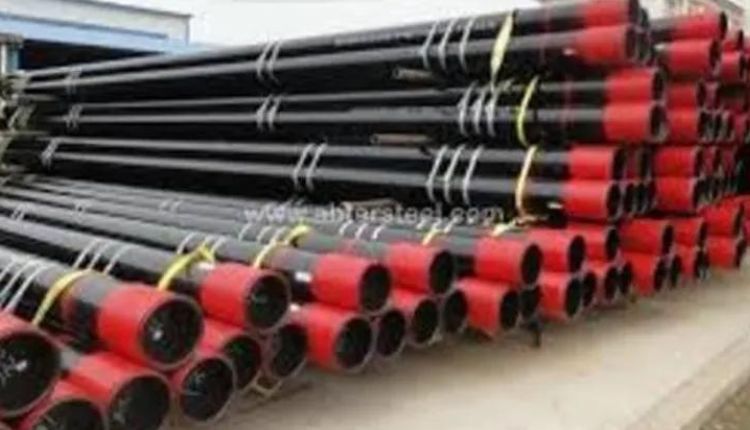Choosing the Right Oilfield Pipe Grade for Your Operation
In oil and gas operations, selecting the right materials is paramount to the success and safety of the entire process. Oilfield pipes are essential components, and choosing the correct grade ensures optimal performance and reduces the risks associated with challenging drilling conditions.
Oilfield pipes come in various grades, each suited to different applications based on pressure, temperature, and environmental exposure. Here, we’ll explore the most common oilfield pipe grades, their material compositions, and how to choose the best one for your operation.
Types of Oilfield Pipes
Oilfield pipes serve various functions, including drilling, casing, and tubing. The three most common types of pipes used in oilfield applications are:
- Drill Pipes: These are thick-walled, seamless steel pipes used to rotate the drill bit and circulate drilling fluid. They are designed to withstand enormous stresses, including tensile, torsional, and pressure forces during drilling.
- Casing Pipes: Casing provides structural integrity to the borehole and protects the well from contamination. These pipes also help prevent the well from collapsing and are often exposed to varying pressures and temperatures.
- Tubing: Tubing is installed inside the casing and is used to transport oil and gas from the well to the surface. It must be capable of withstanding internal pressures from the well while resisting external pressures from the formation.
Common Oilfield Pipe Grades
Oilfield pipe grades are primarily defined by their chemical composition and mechanical properties. The main aspects to consider are tensile strength, yield strength, hardness, and resistance to environmental factors like corrosion. Some of the most widely used grades include:
1. Grade J55
Grade J55 is one of the most basic and commonly used pipe grades in oil and gas wells, particularly for shallow wells where lower pressure and temperatures are expected. It is made from carbon steel and offers a tensile strength of around 517 MPa and a yield strength of 379 MPa.
Applications:
J55 is typically used in surface casings, conductor pipes, and shallow wells with minimal environmental stress.
Benefits:
- Affordable option for low-pressure environments.
- Readily available and widely used in various oilfields.
- Grade K55
Grade K55 is very similar to J55 in composition and properties, but it has a slightly higher tensile strength (552 MPa) and yield strength (379 MPa). K55 pipes are used in environments where slightly higher pressures are present.
Applications:
This grade is often used in deeper wells and intermediate-depth casing strings where more pressure resistance is needed than J55 can offer.
Benefits:
- Increased strength compared to J55.
- Suitable for moderate depths and pressures.
- Grade N80
Grade N80 is a high-strength grade commonly used in deeper wells. It offers a higher tensile strength (758 MPa) and yield strength (552 MPa) and is often used in environments with moderate to high pressures and temperatures.
Applications:
N80 is widely used for casing in deep wells, production tubing, and critical pressure applications.
Benefits:
- High strength for deep wells.
- Better resistance to pressure than J55 and K55.
- Grade P110
Grade P110 is a high-strength, high-performance pipe designed for deep wells and extreme pressure applications. With a tensile strength of 862 MPa and a yield strength of 758 MPa, P110 is ideal for deep well drilling where high pressures and stresses are a concern.
Applications:
P110 is used in deep wells with significant pressures and temperatures, often as production tubing or casing in challenging environments.
Benefits:
- Exceptional strength for extreme depths.
- Suitable for wells with high external pressures.
- Grade Q125
Grade Q125 is one of the strongest pipe grades for oil and gas drilling. It is specifically designed for ultra-deep wells and the most extreme conditions, where tensile strength and pressure resistance are critical.
Applications:
Used in ultra-deep wells and those with extreme pressures, such as offshore and unconventional wells.
Benefits:
- Exceptional strength and pressure resistance.
- Suitable for ultra-deep wells where other grades would fail.
Factors to Consider When Choosing a Pipe Grade
When selecting an oilfield pipe grade, it’s essential to consider the following factors to ensure you choose the right material for your operation:
- Pressure and Temperature:
The deeper the well, the greater the pressure and temperature. High-strength grades like P110 or Q125 may be required for deep wells, while J55 or K55 might suffice for shallow wells. - Corrosion Resistance:
If your well is in a sour environment with CO₂ or H₂S, selecting a grade with strong corrosion resistance, such as L80, is vital. - Well Depth:
The depth of the well directly impacts the strength requirements of the pipes. Deeper wells require pipes with higher tensile and yield strength to withstand the pressures and stresses of the environment. - Cost vs. Performance:
Higher grades like P110 or Q125 offer superior strength but come at a higher cost. Balancing the strength required for your well conditions with your budget is crucial.
Conclusion
From shallow wells requiring basic grades like J55, high-pressure wells demanding advanced grades like Q125, selecting the appropriate grade can ensure efficiency, safety, and cost-effectiveness in your oilfield operations. By considering factors such as pressure, temperature, corrosion, and cost, you can make an informed decision that keeps your operation running smoothly.

